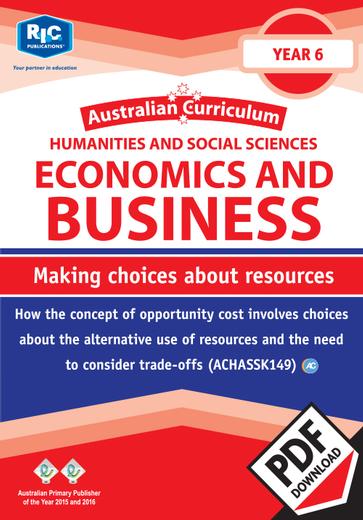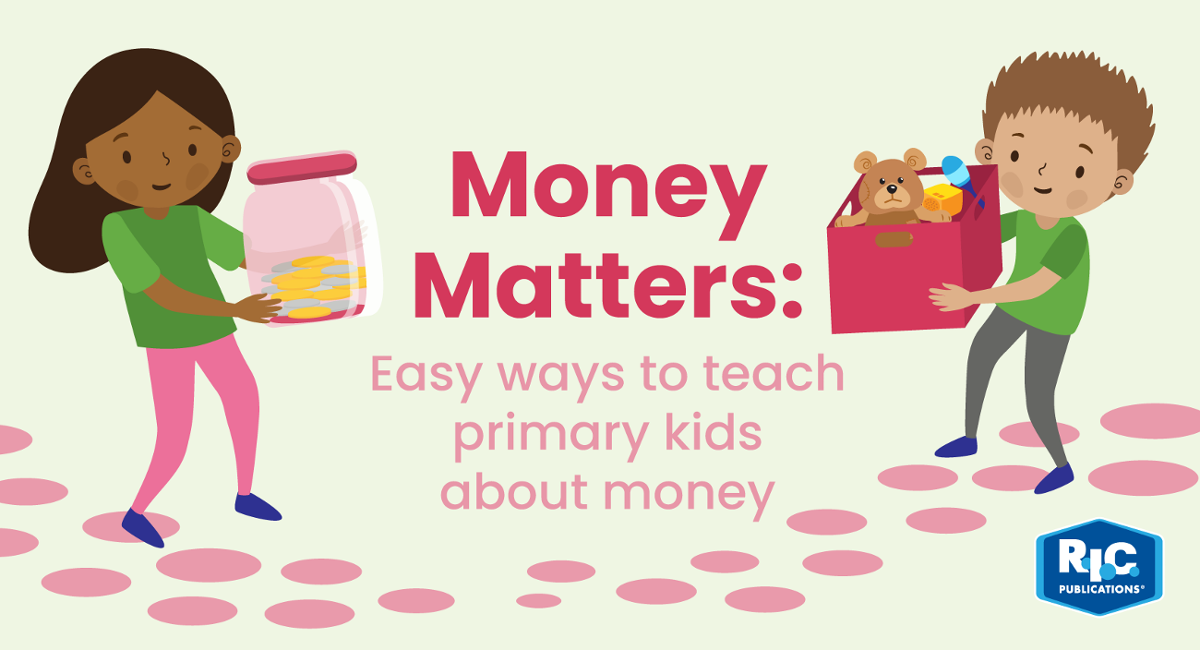- Thursday 08 October 2020
- 0 Comments
Teaching kids to be smart about money is an important life skill, and parents and teachers both have an important role to play.
In our cashless society, the way primary-aged children experience money is probably quite different compared to when their parents were younger. Rather than seeing shop-owners making change at their local milk bar/convenience store, or counting out how many 5c candies they can buy with the $1 coin in their pocket, today's children are more likely to see cards swiping that look like an infinite source of money.
It’s important to shape children’s relationship with money by making the dollars and cents part of the conversation—but how? Research by CommBank (2013) shows that children develop most of their money attitudes from their parents, and almost 80% of parents believe they could do a better job of teaching their kids about money. This article aims to help parents and teachers to cultivate financial literacy in primary school students, so that they can understand money as a finite resource that we make decisions to allocate in certain ways—whether to spend or save, how to choose what to spend where and so on. Building those financial literacy skills starts now, so let’s help them get on track!
Years 1 to 3: Spending
At this age, most children are ready to understand the difference between needs and wants, how to earn money, and how to track where money goes. Start talking about what we need (food, shelter, clothing, transport etc.) versus what we want, and talk about reasons why we want what we do: with so much marketing aimed at children, these conversations can help them to think critically.
It’s a great age to start giving children pocket money, which helps them to develop impulse control, as well as the ability to spend wisely, save for goals, and to foster independent decision-making. This can be even more effective if they’ve earned pocket money from chores, as it helps them understand money as something that results from work: after all, it’s easy to want to buy all the cute things advertised on TV, but when you’ve worked hard for it you want to get the biggest bang for your buck!
Another conversation you can have at this age are the differences between goods and services, and the importance of giving to others in need. They can even fundraise for their school or sports team, participate in the MS Readathon and more. We’ve compiled a great guide to Fundraising for charity to get you started with some ideas!
Resource spotlight: Money – Level 1 (ages 5–6)
Also available as an ebook here.
This teaching resource is aimed at reinforcing classroom and community experiences involving money, supporting strategies involving play money, other teaching aids and real experiences, and includes worksheets designed to accommodate the average child. A range of age-appropriate fun exercises are included, such as recognising coins and prices at a toy shop and fruit shop, adding to reach a given total, making change and more.
Teaching older children about money? Don’t miss Money – Level 2 (ages 6–7) and Level 3 (ages 7–8).
Years 4 to 6: Saving
At this age, children are generally more ready to delay that instant gratification and start saving for the things that matter to them. It’s a great age to set them up with a bank account and start discussing slightly more complex concepts like interest, taxes and so on. Give them a set amount of money to spend for an event like a birthday party or a weekend family getaway and ask them to organise the budget.
Resource spotlight: moneysmart.gov.au Teaching resources (Foundation – Year 12)
Looking for fun interactive activities to reinforce financial literacy? The Australian Government’s MoneySmart has teaching resources for every age and stage of money education, with activities from developing a profitable environmentally-friendly nature fun park with a budget of $1 000 000, to deciding upon needs and wants by comparing priorities in other countries.
Groceries are a staple expense in life, so it’s a good first step to show your kids how much household items cost. Give them a shopping list on your next visit to the supermarket and guide their decisions around specific items and brands, as well as explaining factors such as price-per-kg.
It’s also good to get them to start thinking about larger household bills such as utilities, mortgage and insurance. Explaining what these are and why they need to be paid is an important lesson on money management. This helps to dispel myths early on, like the idea that a credit card equals 'free money'.
Some of these numbers will be too large or complex for them to understand at this age—and you also might feel uncomfortable going into so much detail about your expenses so early on—so keeping it as simple and straightforward as possible is a win-win for everyone.
Resource spotlight: Making choices about resources (Year 6 ebook)

This 38-page unit from the Australian Curriculum Economics and business series talks about the difference between needs and wants, solving the mystery of supply and demand, offering the choices of opportunity cost, and how to make well-informed decisions about spending their hard-earned money.
Resource spotlight: Money matters – A teachers handbook for developing money concepts (ages 5–10)
Written by beloved mathematical educator, Paul Swan, this teachers handbook for developing money concepts is a comprehensive collection of practical ideas and resources for introducing and developing money concepts with students in a classroom and school environment. Rather than just performing calculations with money, the book integrates the mathematical ideas associated with money with societal issues, so students can put their financial learnings into real-life contexts.
We hope we’ve helped you to equip your young learners with a better understanding of money, and to build upon financial literacy to last a lifetime!
Explore our Australian Curriculum – Economics and business resources
For more great money and maths teaching ideas, keep an eye on our Teaching Ideas blog.

.jpg)
.jpg)